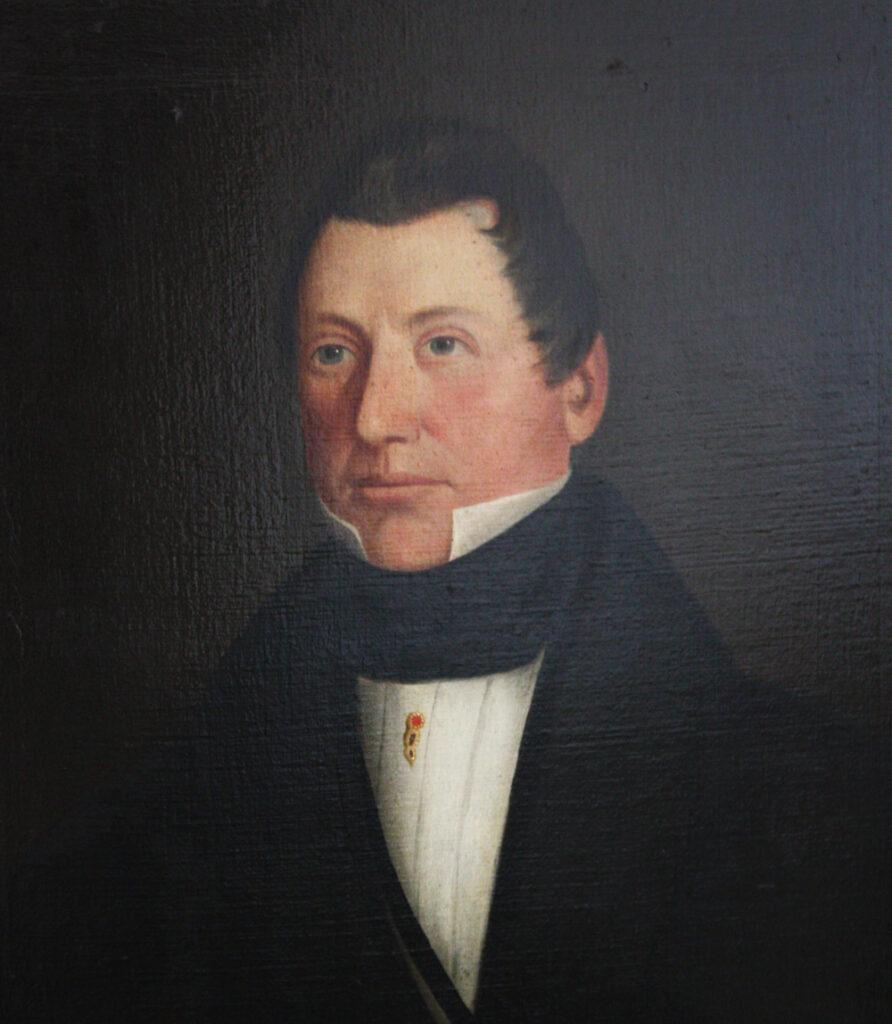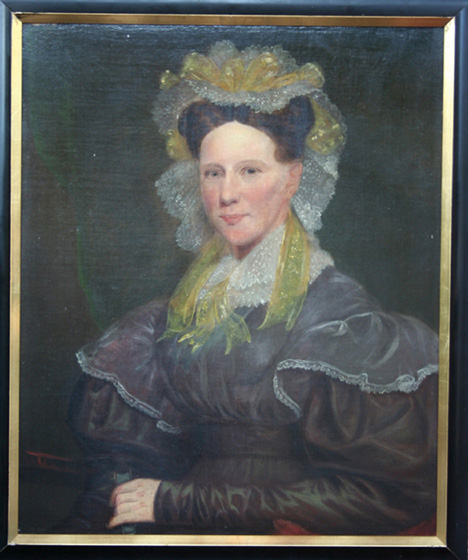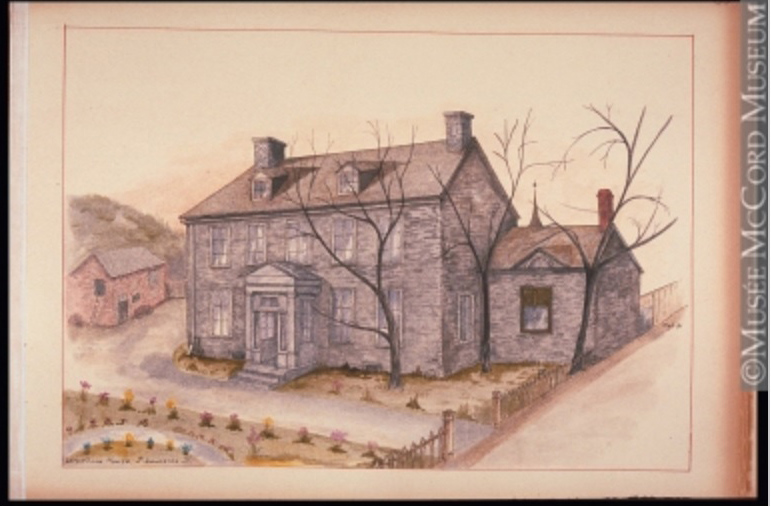This is the first in a series of posts about four generations of my ancestors in colonial Massachusetts and Connecticut. It will include the Bagg, Burt, Phelps, Moseley, Stanley and other related families between 1635 and 1795.
Seventeenth-century New Englanders were wary of strangers. In Springfield, Massachusetts, newcomers had to be approved by the town residents before they could stay for more than a month, but when John Bagg moved to Springfield around 1657, he not only stayed, he married the daughter of one of the town’s leading citizens.
John’s origins are obscure, but once he settled in Springfield, town records were thorough, and the life of my seven-times great-grandfather was well documented. The first record of John Bagg’s name in Springfield was his marriage to Hannah Burt, daughter of Henry Burt and Ulalia March, on Dec. 24, 1657.1 Soon after, he opened an account at John Pynchon’s general store. He also worked for Pynchon, earning several shillings a day for fetching hay and stones, felling timber, reaping wheat and trimming the orchard.2
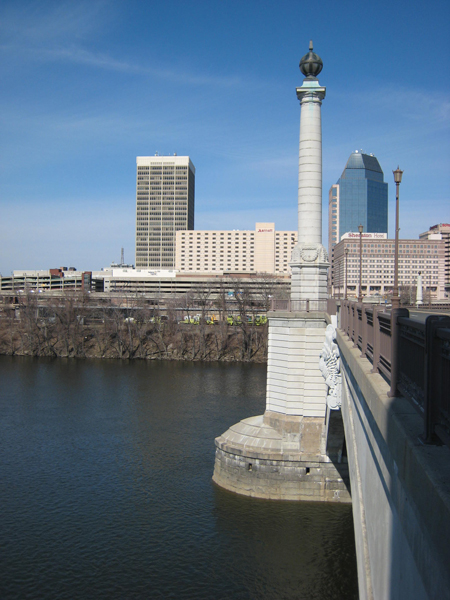
In 1659, he was listed in the ninth of 10 rows in the meeting house, where seating was assigned according to status in the community. Three years later, he had moved up a row. In 1662, John and several friends appeared in court, charged with the illegal act of playing cards. He pleaded guilty and paid a fine.
Another case involving a breach of town regulations was more complicated. John had been named a fence-viewer, an important responsibility since escaped livestock could cause crop damage. When he and his fence-viewing partner Reice Bedortha observed defects in a neighbour’s fence, town officials fined the owner. At the same time, John complained there was a defect in Bedortha’s fence, but Bedortha countered that it wasn’t his fence. Finally both John and Bedortha were fined for not carrying out their fence-viewing duties properly.
The inhabitants of Springfield all supported their families as subsistence farmers. No one became rich, but neither did they starve. They mainly acquired farmland as land grants from the town. John’s first grant, a six-acre parcel of land, was approved in 1660. In 1664, he purchased 20 acres on the Chicopee Plain and, in the same year, the town granted him 30 acres near the Agawam River (now the Westfield River.)
In 1668, John and two friends leased 40 acres. Cash was always in short supply, so they paid half the rent in “good merchantable wheate, and the other half in Pease and Indian corne, all good and merchantable.”4The town later granted him several more small pieces of land.
Springfield, the first town built in the western interior of the Massachusetts Bay Colony, was founded beside the Connecticut River in 1636 by a group of eight men. The site was chosen primarily for commercial reasons. The Great River, as people called it, provided transportation, while meadows provided grazing for livestock and the fertile soil allowed the settlers to grow crops.
The town founders purchased land on both the east and west sides of the Connecticut River from the indigenous people. The town was on the east side and most of John’s property was on the other side, in what later became West Springfield.
King Philip’s War
The destruction of much of Springfield in 1675, during King Philip’s War, must have been the most terrifying event of John’s life. Town residents were on friendly terms with many of the area’s indigenous people, but a bloody conflict between the New England settlers and a group of Native Americans erupted in 1675. Some 32 houses and 25 barns in Springfield were burned, as well as several mills and large quantities of corn that had been stored for the coming winter.
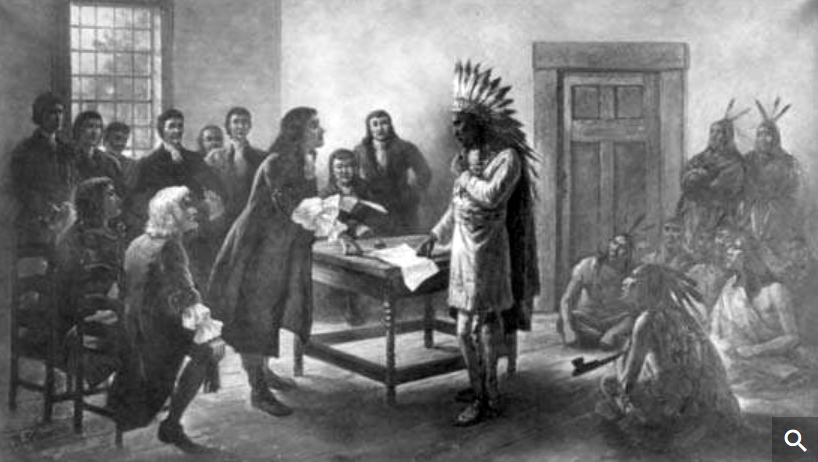
His wedding was another milestone. When he married Hannah in 1657, she was 16 years old; he may have been considerably older than her. Hannah was the tenth of Henry and Ulalia Burt’s 13 children and the first to be born in New England.
Hannah and John eventually had 10 children: Hannah (1658-1740) married Nathaniel Sikes; Mercy (1660-1738) m. Ebenezer Jones; Daniel (1663); John (1665-1740) m. Mercy Thomas; Daniel (1668-1738) m. Hannah Phelps (my direct ancestors); Jonathan (1670-1746) m. Mary Weller; Abigail (1675-1739) m. Benjamin Cooley; James (1675-1689), Sarah (1678-?) m. 1. Benoni Atchison, 2. Samuel Barnard; Abilene, (1680- 1750).5
Hannah died, age 39, on Aug. 1, 1680,6 several days after giving birth to Abilene. Perhaps members of the Burt family stepped in to help raise the couple’s nine surviving children. Three years later, on Sept. 5, 1683, John Bagg “was sicke and died”.7
John’s probate record shows that Samuel Marshfield became guardian of sons John and James, and of baby Abilene, but it is not clear what happened to the other children. The inventory of his estate listed the simple belongings of a farmer: a yoke of oxen, a horse, some cows and swine, a cart, plow, axe, kettle, bedding, two coats, a pair of britches, a hat and a pair of stockings. His house and adjoining land were evaluated at 16 pounds. His debts totalled 50 pounds.8
In 1893, Springfield historian Henry M. Burt wrote that John Bagg “appears to have been an industrious citizen and his descendants are among the most prosperous and intelligent people of recent times.”9 Some of John and Hannah Bagg’s descendants still live in Massachusetts today.
See also:
Janice Hamilton, “Henry Burt: from Devon Clothier to Springfield Farmer,” Writing Up the Ancestors, March 7, 2018, https://www.writinguptheancestors.ca/2018/03/henry-burt-from-devon-clothier-to.html
Janice Hamilton, “The Obscure Origins of John Bagg,” Writing Up the Ancestors, March 21, 2018, https://writinguptheancestors.blogspot.ca/2018/03/the-obscure-origins-of-john-bagg.html
Photo credits:
Janice Hamilton
Metacom (King Philip) meeting settlers, illustration 1911; Library of Congress, Washington, D.C. (Digital file no. cph 3c00678), https://www.britannica.com/event/King-Philips-War(accessed Feb. 22, 2018)
Footnotes:
- Massachusetts: Vital Records, 1621-1850 (Online Database: AmericanAncestors.org, New England Historic Genealogical Society, 2001-2016). https://www.americanancestors.org/databases/massachusetts-vital-records-1620-1850/image?volumeId=39814&pageName=21&rId=1320087338, accessed Feb. 21, 2018.
- Henry M. Burt, Silas W. Burt. Early Days in New England. Life and Times of Henry Burt of Springfield and Some of His Descendants. Springfield: Clark W. Bryan, printers, 1893. Google Books, p.250.
- Henry M. Burt, The First Century of the History of Springfield. The Official Records from 1636 to 1736, with an historical review and biographical mention of the founders.Volume 1 Springfield, Mass: Printed and Published by Henry M. Burt, 1898. Google Books, p. 55.
- Burt, Early Days in New England, p. 251.
- Thomas B. Warren, Springfield Families, Vol. 1 (A-E), copied by Mercy Warren Chapter, Springfield, Mass, 1934-1935, p. 22.
- Massachusetts: Vital Records, 1621-1850 (Online Database: AmericanAncestors.org, New England Historic Genealogical Society, 2001-2016). https://www.americanancestors.org/databases/massachusetts-vital-records-1620-1850/image?volumeId=39814&pageName=65&rId=1320089032, accessed Feb. 21, 2018.
- Massachusetts: Vital Records, 1621-1850 (Online Database: AmericanAncestors.org, New England Historic Genealogical Society, 2001-2016). https://www.americanancestors.org/databases/massachusetts-vital-records-1620-1850/image?volumeId=39814&pageName=65&rId=1320089032, accessed Feb. 20, 2018.
- Hampshire County, Massachusetts probate records 1660-1916. index, 1660-1971 [microform].
- Burt, Early Days in New England, p. 250.
Additional Sources:
Virginia DeJohn Anderson. New England’s Generation, The Great Migration and the Formation of Society and Culture in the Seventeenth Century. Cambridge, U.K.: Cambridge University Press, 1991.
Lyman Hotchkiss Bagg “Autobiography 1846-1895. Forming a supplement to the “Obituary Notice of a Yale Graduate of ’69 written by himself in 1890.” New York: printed for private distribution by Karl Kron, publisher; reprinted from the Biographical Records of the Yale Class of 1869, vol. I, p 24-32.
Patricia Law Hatcher. Researching Your Colonial New England Ancestors. Provo, Utah: Ancestry Publishing, 2006.
Nathaniel Philbrick. Mayflower. A story of courage, community and war. New York: Penguin Books, 2007.

